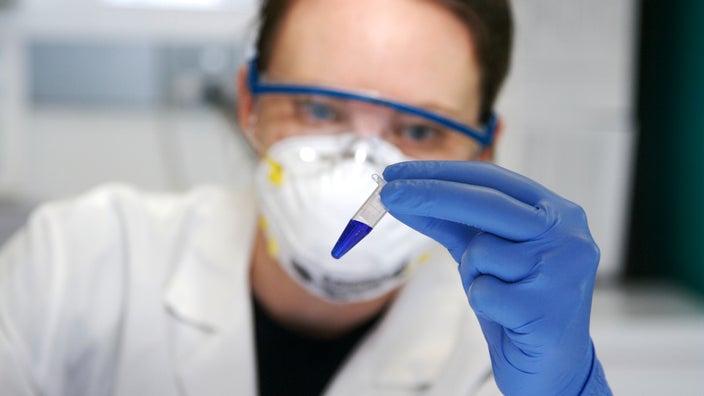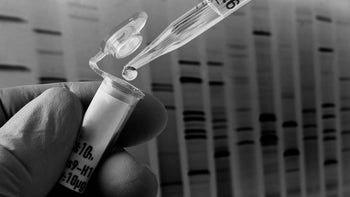
What’s the Difference Between Ex Vivo and In Vivo Gene Therapy?
Key takeaways:
Gene therapy can be given through ex vivo or in vivo methods.
Ex vivo gene therapy involves removing cells from your body, modifying them, and placing them back into your body. With in vivo gene therapy, new genes are inserted directly into your body.
Both methods have risks and side effects associated with them. Talk to your healthcare provider if you’re wondering whether gene therapy is right for you.

Gene therapy is a cutting edge technique for treating certain medical conditions. It involves modifying a person’s genes with a goal of treating or curing a disease. It’s a promising treatment for conditions that have no other cures. But it’s also a complex area of medicine that we’re still learning about.
There are two main ways to deliver gene therapy: ex vivo and in vivo methods. Ex vivo gene therapy takes cells from your body, modifies them in a lab, and puts them back into the body. In vivo gene therapy uses viruses or other methods to deliver genes directly into your cells. Both types of gene therapy are being studied to treat medical conditions like certain types of cancer as well as genetic and inherited disorders.
In this article, we'll learn more about how gene therapy works and the differences between ex vivo and in vivo methods.
What’s the goal of gene therapy?
The goal of gene therapy is to reverse damage caused by any faulty genes that you may have. Ideally, gene therapy is a way to treat or cure certain diseases.
Some people have damaged or missing genes at birth. Others have genes that mutate, or change, over time. The delivery of new genes to the body is designed to replace, or override, defective genes responsible for disease.
How does gene therapy work?
Simply put, gene therapy changes the way existing genes in your body work. Some diseases are caused by mutated, or faulty, genes. Gene therapy involves changing or replacing these genes to try to treat or cure a medical condition.
Read more like this
Explore these related articles, suggested for readers like you.
When healthy genes enter your body through gene therapy, they can fight disease and help restore health. There are a few ways they can do this. For example, gene augmentation is one method. This is when a health copy of a gene is added to cells where a faulty gene exists. The healthy copy overrides the negative effects of the faulty gene. In addition to gene augmentation, other methods are being used and studied as well.
Healthy genes are often carried into the body by a vector. You can think of a vector as a delivery vehicle, taking new genes where they need to go in the body. Vectors are often viruses because viruses are good at entering cells. If you’re wondering why you would purposely give someone a virus, it’s a good question. Viral vectors are safe to use because all the infectious parts of the virus are removed. The virus is modified to deliver the new genes only.
What’s the difference between ex vivo and in vivo gene therapy?
In ex vivo gene therapy, specific cells are removed from the body and sent to a lab. In the lab, these cells are altered. Often, new DNA is added to the cells using a viral vector. Once the newly altered cells are prepared, they’re delivered back to you, usually by an intravenous (IV) infusion.
With in vivo gene therapy, new genetic material (usually DNA) is created in a lab, and inserted into your cells directly. A vector usually carries the new genetic material into the body through an injection in the blood, or directly to the target organ.
When is ex vivo gene therapy used?
Ex vivo gene therapy is most often used in blood-related disorders. This includes certain cancers — such as specific types of leukemia and lymphoma — and genetic disorders. FDA-approved ex vivo gene therapies include Tecartus (brexucabtagene) and Zynlonta (loncastuximab tesirine). Both treat types of lymphomas.
Let’s look at an example where ex vivo gene therapy is being studied in clinical trials:
Ex vivo gene therapy is currently being studied in various clinical trials, including for sickle cell disease (SCD) in children.
SCD is a genetic blood disorder where red blood cells are an abnormal shape. These red blood cells can’t carry oxygen well, so organs throughout the body receive less oxygen. The goal of gene therapy treatment for SCD is to lower the activity of a gene — known as BCL11A — that contributes to the production of these abnormal red blood cells.
To do this, specific cells in the blood (stem cells) are collected from the child. These cells are edited to override BCL11A. These modified cells are then returned to the body by an IV infusion. In the body, the BCL11A is made inactive and SCD improves. This gene therapy method is still being studied, and is not FDA-approved at this time.
When is in vivo gene therapy used?
In vivo methods may be preferred for genetic disorders that affect one specific gene in the body. It’s also thought to be preferred when the target is an internal organ, like the heart. FDA-approved in vivo gene therapies include Luxturna (voretigene neparvovec-rzyl) and Zolgensma (onasemnogene abeparvovec-xioi). Luxturna treats an inherited form of vision loss, and Zolgensma treats spinal muscular atrophy.
With in vivo gene therapy, the target cells or tissues need to be easily accessible for injection of the new genetic material. For example, Luxturna is injected directly into the eye, beneath the retina.
In vivo gene therapy is also currently being studied in clinical trials for medical conditions like hemophilia A. Hemophilia A is a genetic disorder where bleeding occurs because the blood doesn’t have enough of a specific protein — blood clotting factor VIII. Here, factor VIII levels are low because of a mutation in a specific gene known as the F8 gene.
With in vivo gene therapy methods, a normal F8 gene is packaged with a viral vector and delivered to the body by IV infusion. The normal F8 gene travels to the liver, where factor VIII is made. When factor VIII levels rise, bleeding stops. Like the ex vivo method for SCD, this in vivo gene therapy treatment for Hemophilia A is still being studied, and is not FDA-approved at this time.
Is ex vivo or in vivo preferred over the other?
Not necessarily. Both ex vivo and in vivo gene therapy have advantages and disadvantages. The best option depends on the medication that you need to treat your health condition.
An advantage of ex vivo gene therapy is the ability to control the entire process of creating new genetic material. With ex vivo methods, you can verify the health of the new genetic material before a person receives it. But, it’s a time-consuming and complicated process to prepare cells outside the body. It’s also more difficult to target internal organs, like the heart or lungs, with ex vivo methods.
With in vivo methods, it’s easier to target internal organs. It’s also less complicated, since cells don’t need to be removed from a person at all. A disadvantage of in vivo methods is that they require very precise delivery of genetic material to the damaged area of the body. If the delivery isn’t perfect, an immune response can occur.
What are the risks of gene therapy?
The risks of ex vivo and in vivo gene therapy depend on the product being used. All gene therapies are fairly new on the market, so it’s important to talk to your healthcare provider about potential risks and side effects before starting treatment.
Like all prescription medications, the FDA regulates and approves gene therapy products before they can be used by the public. The FDA requires Risk Evaluation and Mitigation Strategies (REMS) programs for many gene therapies. REMS programs are required for certain medications to minimize risks associated with the product. For example, Kymriah (tisagenlecleucel), a gene therapy that treats types of leukemia and lymphomas, has a REMs program.
Is ex vivo or in vivo gene therapy more expensive than the other?
Both ex vivo and in vivo gene therapy are quite expensive. Your specific costs will vary depending on your medication, insurance coverage status, and any other forms of financial assistance you may receive.
In general, ex vivo gene therapy requires more time and resources than in vivo methods, which can make it more expensive in some cases. Ex vivo gene therapy methods can take weeks and require hospitalization. And some ex vivo methods also require a person to receive chemotherapy. In some cases, in vivo gene therapy may be given in an outpatient setting.
However, in vivo gene therapy is expensive too. In fact, the most expensive medication in the U.S. is Zolgensma, an in vivo gene therapy product used to treat spinal muscular atrophy. It’s estimated to cost $2.1 million for one dose.
Many manufacturers of gene therapy products have dedicated support teams to help with access to treatment. In some cases, manufacturers of gene therapy products may help you pay for your treatments. For example, the manufacturer of Kymriah (Novartis) has a support program called Kymriah Cares. The financial assistance program may help cover the cost of Kymriah if you need it.
The bottom line
Gene therapy can be administered through ex vivo and in vivo delivery methods. In ex vivo methods, some of your cells are removed from your body and sent to a lab. The cells are genetically altered in some way before returning to your body. With in vivo methods, new genetic material is inserted into a person’s cells directly.
If you have a medical condition where gene therapy may be a treatment option, talk to your healthcare provider about which gene therapy product is best for you.
Why trust our experts?



References
American Society of Gene and Cell Therapy. (2021). Vectors 101.
Boston Children’s Hospital. (n.d). Gene therapy for hemophilia A.
Boston Children’s Hospital. (n.d). Gene therapy for sickle cell disease.
Brennan, T., et al. (2020). Gene therapy: Keeping costs from negating its unprecedented potential. CVS Health.
Canver, M. (2009). Evaluation of the clinical success of ex vivo and in vivo gene therapy. Journal of Young Investigators.
Chen, W., et al. (2016). Microneedles as a delivery system for gene therapy. Frontiers in Pharmacology.
Cross, D., et al. (2006). Gene therapy for cancer treatment: Past, present and future. Clinical Medicine & Research.
Dwivedi, S., et al. ( 2018). Genetic engineering. Omics Technologies and Bio-Engineering.
Food and Drug Administration (2017). FDA approves novel gene therapy to treat patients with a rare form of inherited vision loss.
Food and Drug Administration (2017). What is gene therapy? How does it work?
Food and Drug Administration. (2018). What is gene therapy?
Food and Drug Administration. (2019). FDA approves innovative gene therapy to treat pediatric patients with spinal muscular atrophy, a rare disease and leading genetic cause of infant mortality.
Food and Drug Administration. (2021). Approved cellular and gene therapy products.
Food and Drug Administration. (2021). FDA grants accelerated approval to loncastuximab tesirine-lpyl for large B-cell lymphoma.
Food and Drug Administration. (2021). Kymriah (tisagenlecleucel).
Food and Drug Administration. (2021). TECARTUS (brexucabtagene autoleucel).
Genehome. (n.d). Examples of FDA-approved gene therapies.
Gowing, G., et al. (2017). Ex vivo gene therapy for the treatment of neurological disorders. Progress in Brain Research.
Kang, U. J. (2009). Gene therapy: Genetically modified cells. Encyclopedia of Neuroscience.
Kaufmann, K.B., et al. (2013). Gene therapy on the move. Embo Molecular Medicine.
Marintcheva, B. (2018). Virus-based therapeutic approaches. Harnessing the power of viruses.
MedlinePlus. (n.d). How does gene therapy work?
MedlinePlus. (n.d). Is gene therapy safe?
MedlinePlus. (2021). What is gene therapy?
Mendell, J. R. (2020). Current clinical applications of in vivo gene therapy with AAVs. Molecular Therapy.
Novartis. (n.d.). Risk evaluation and mitigation strategy (REMS).
Novartis. (n.d.). Support Resources for Kymriah.
Selkirk, S. M. (2004). Gene therapy in clinical medicine. Postgraduate Medical Journal.
Soofiyani, R. S., et al. (2013). Gene therapy, early promises, subsequent problems, and recent breakthroughs. Advanced Pharmaceutical Bulletin.
Wong, C. H., et al. (2020). Estimating the financial impact of gene therapy. MedRxIV.
YourGenome. (2021). What is gene therapy?


















